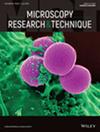To Evaluate μTBS, Microleakage, and Resin Tag Length via Scanning Electron Microscopy of Different Resin Sealants Clinpro and Embrace Bonded to the Intact Enamel in Primary Molars
Abstract
To evaluate the micro-tensile bond strength (μTBS), microleakage, and resin tag length via SEM of different resin sealants (Clinpro and Embrace) bonded to intact enamel as compared to the glass ionomer (GI) sealant in primary molars. Forty-eight fully erupted, intact second primary molars were obtained. The samples were randomly assigned to three groups according to the type of sealant used (n = 16): Group 1 (GI sealants), Group 2 (Clinpro), and Group 2 (Embrace). All restored teeth were submerged in water, keeping the temperature at 37°C for 24 h, and then thermocycled. Microleakage assessment was performed using a dye penetration test and μTBS using a universal testing machine. Scanning electron microscopy (SEM) was performed to assess the resin tag length and interface. Data analysis was conducted using ANOVA and post hoc Tukey tests. The significance level was set at p < 0.05. The lowest microleakage score (12.54 ± 0.09) and highest bond value (11.27 ± 0.11 MPa) were observed in Group 3 (Embrace) samples. The maximum values of marginal leakage (30.65 ± 0.04) and lowest bond scores (8.74 ± 0.02 MPa) were demonstrated by Group 1 (GI-based sealant). Intergroup comparisons indicated that Group 2 (Clinpro) and Group 3 exhibited comparable outcomes. Embrace and Clinpro displayed comparable bond integrity and marginal leakage. However, the authors of the existing study recommend that Embrace could be a better option in pediatric patients as it is difficult to maintain isolation with children.





 求助内容:
求助内容: 应助结果提醒方式:
应助结果提醒方式:


